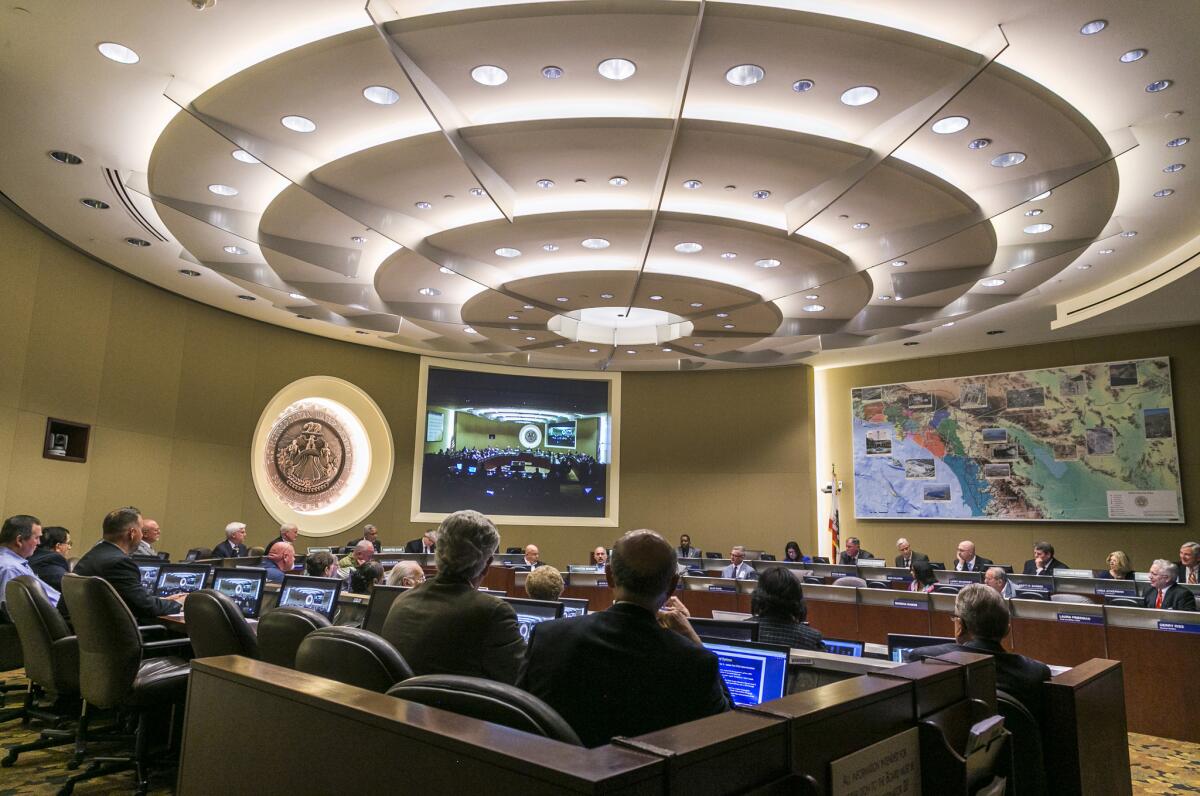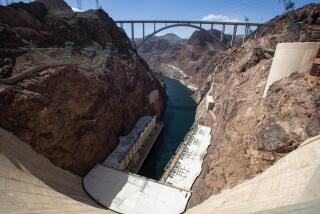Editorial: Southern California doesn’t have decades to figure out water recycling. We need it now

The great achievement of the Metropolitan Water District of Southern California is that few people ever give it much thought.
You turn on the faucet and the water comes out. The stuff is reliably clean and safe, and always available. Pretty cheap, too. If you live in Los Angeles, Orange, San Diego, Riverside, San Bernardino or Ventura county, there’s a good chance your water was supplied to your city or water agency by the Met, which in turn got it from — but wait, who really cares where the Met got it from? We don’t have to worry about it. The water is just there. Always has been. Always will be.
Until it’s not, of course.
Now is a pretty good time to start thinking about the Met, a public water wholesaler that serves 19 million people — one of every two Californians. General Manager Jeff Kightlinger, who has led the mammoth operation for 15 years, is slated to retire at the end of 2020, and the board is hunting for a successor.
California appears headed back into drought after a relatively brief two years’ respite. Drought in the Rocky Mountain region, competition from growing Western states and an ecological emergency in the Salton Sea will continue reducing supplies from the Colorado River basin, Southern California’s largest single source of water, which now is down 10% from its peak years and will be down 20-35% over the next 20 years. The next largest source — the Sierra snowpack — is rapidly changing as formerly reliable, slow-melting snow is replaced by warmer rainfall and the likelihood of flooding.
Los Angeles, which once lived mostly off water imported from the Owens Valley, has given up much of it to the efforts to repair environmental damage at Mono Lake and the mostly dry Owens Lake, and now it buys more water than ever from the Met.
Meanwhile, California is locked in a political and legal battle with its erstwhile federal partner over water in the Sacramento-San Joaquin River Delta, as the Trump administration flouts state endangered species laws and attempts to export more water from the environmentally sensitive region to fields and orchards in the San Joaquin Valley. The move could mean less water for Southern California.
If the Metropolitan Water District is going to reassess its mission, and if the water users in its six-county area (accounting for 1 in every 17 Americans) are going to rethink what they want from the agency, now is the time.
What we in Los Angeles should want from the Met is a continuing flow of clean water from the faucet — but this time with planning and infrastructure that reduce reliance on diminishing imports, minimize damage to our fellow Californians in the delta and elsewhere, and sustain iconic species like migrating salmon.
That means, inevitably, that we’ll need a Metropolitan Water District that plans and builds out a system to recapture local stormwater and, increasingly, wastewater.
The Met and a handful of its member agencies already do that to varying degrees, but at too small a volume to keep pace with the shrinking supply of Rocky Mountain and Sierra snowmelt. The organization’s current leadership says it will get there, but the transformation, realistically, will take decades.
We don’t have decades. California was populated during an usually wet blip in time, and that period appears to be ending. The state is reverting to its naturally dry condition. We need thinkers, planners and builders who can match the vision and daring of the great 20th century engineers who built Parker Dam and the amazing channels, tunnels and pumps of the Colorado River aqueduct, as well as the California aqueduct that runs along I-5 to the Edmonston Pumping Plant, which then lifts the water nearly 2,000 feet over the Tehachapi Mountains (and is the largest single user of electric power in the state).
But the vision and daring must now be directed toward a different kind of project — one that keeps the water flowing even when the snow falling on the Sierra turns to rain and even when the rain fails. If Californians want a future in which they don’t have to think about their water, they need a Metropolitan Water District that will think deeply, responsibly — and locally.
More to Read
A cure for the common opinion
Get thought-provoking perspectives with our weekly newsletter.
You may occasionally receive promotional content from the Los Angeles Times.






